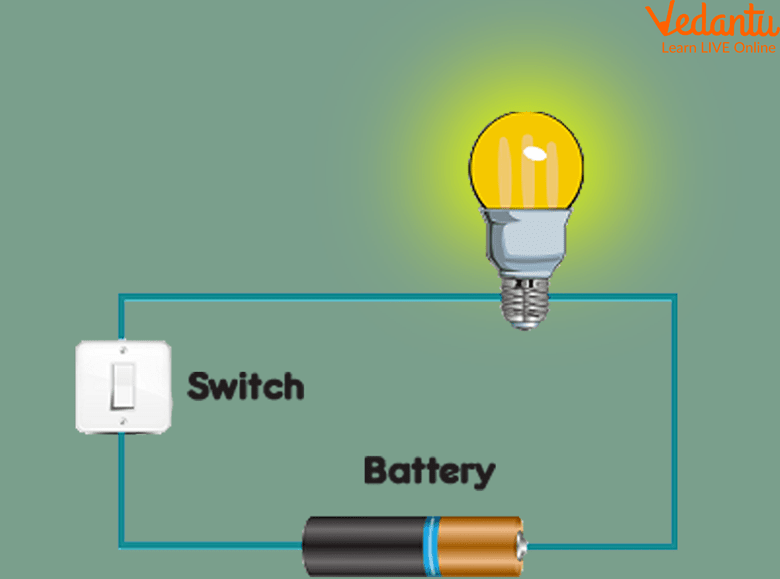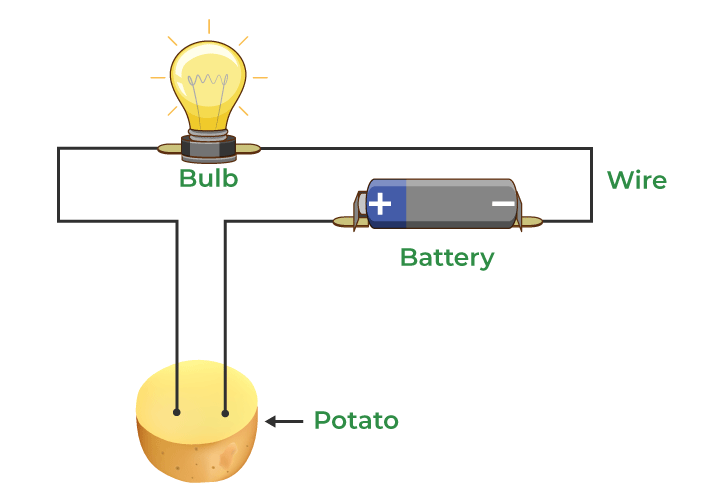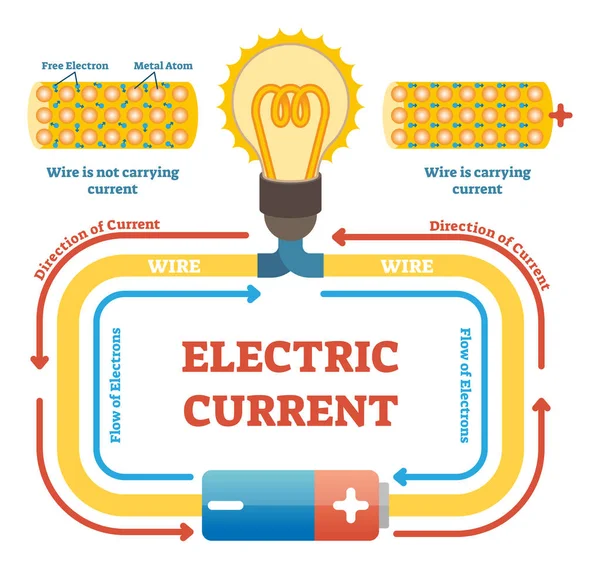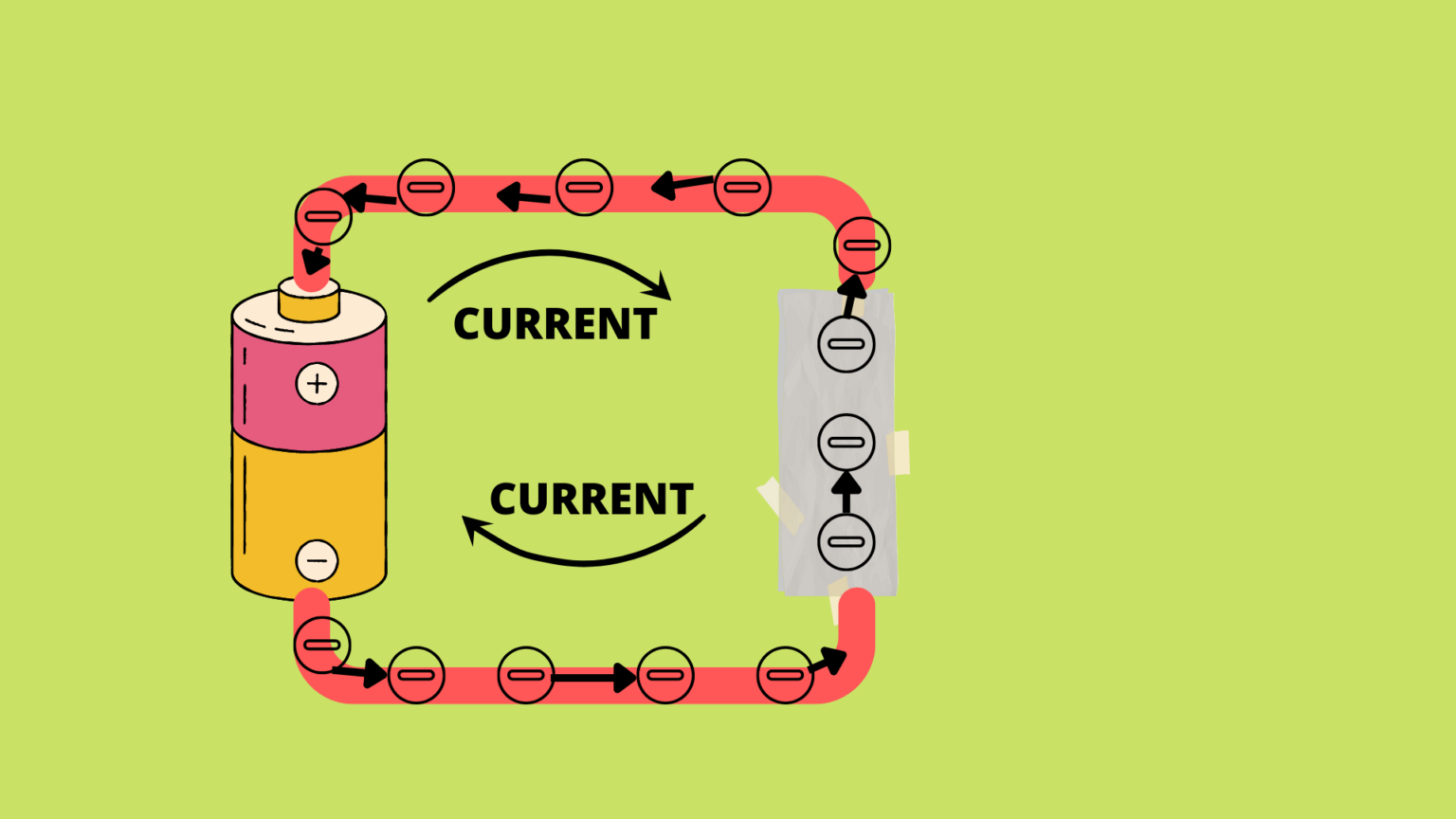Fantastic Tips About How Do You Explain Current In Electricity

Electric Current Lesson For Kids
Demystifying Electrical Current
1. What Exactly Is Electrical Current?
Ever wonder what's really going on inside those wires that power your phone, your lights, or even your fancy electric car? It's not just some magical force! The key to understanding it all lies in something called electrical current. Think of it like this: Imagine a water pipe. You turn on the tap, and water starts flowing. In an electrical circuit, that water is like electrical charge, and the flow of water is similar to the electrical current.
But instead of water, what's actually moving? Well, the primary charge carriers are usually electrons — tiny, negatively charged particles whizzing around atoms. When these electrons start moving in a coordinated fashion, we get electrical current. Now, here's the interesting part: even though electrons are moving, it's not like they're sprinting through the wire. They're more like inching along, bumping into each other and other atoms along the way. Its more of a slow, collective drift than a full-blown race.
Think of it like a crowd moving through a narrow hallway. Each person is taking small steps, jostling with the people around them, but eventually, the crowd makes its way through. Electrical current is the same way; the flow of electrons, despite being relatively slow for each individual electron, contributes to a significant transfer of energy throughout the circuit.
The amount of electrical current is measured in amperes (amps), often shortened to just "A". One amp means a certain amount of electrical charge (specifically, one coulomb) is flowing past a specific point in the circuit every second. More amps means more charge flowing, which usually means more power available to do things, like light up a brighter bulb or spin a motor faster. So, the next time you see something rated at, say, 10 amps, you know it needs a pretty good flow of electrical charge to work correctly.

How Voltage Drives the Current
2. Voltage
So, we know that electrical current is the flow of charge, but what gets those charges moving in the first place? That's where voltage comes in! Voltage, also known as potential difference, is like the pressure that pushes the electrons through the circuit. It's the "oomph" that makes the current happen. Think of it like that water pipe again. The higher the water pressure, the faster and stronger the flow will be. Similarly, the higher the voltage, the more "push" there is on the electrons, and the greater the current.
Voltage is measured in volts (V). A common household outlet in the US is usually around 120 volts, while in many other countries, it's around 220-240 volts. This difference in voltage explains why you need adapters when traveling internationally; your appliances are designed to work with a specific voltage level, and using them with the wrong voltage can be, well, shocking (pun intended!). A nine-volt battery, for instance, provides a relatively small "push", perfect for powering a smoke detector or a small electronic device. A car battery, typically 12 volts, provides a more substantial push needed to start your car's engine.
Its crucial to note that voltage itself doesn't flow. Its the potential for charge to flow. Imagine a slide at a playground. The height of the slide is like voltage — it represents the potential energy a child has at the top. But the child only starts moving (analogous to current) when they actually start sliding down. The voltage provides the potential, and the circuit's components determine how much current actually flows given that voltage. This relationship is fundamental to understanding circuits.
Consider a simple circuit with a battery and a light bulb. The battery provides the voltage (the push), and the light bulb provides resistance to that flow. The voltage "pushes" the electrons through the light bulb's filament, which resists the flow. This resistance causes the filament to heat up and emit light. Without the voltage from the battery, there would be no push, and therefore no current, and the light bulb wouldn't light up!

Resistance
3. Slowing Things Down
We've covered current and voltage, but there's one more key player in this electrical trio: resistance. Resistance is the opposition to the flow of electrical current. Think of it like a narrow section in that water pipe we mentioned earlier. The narrower the pipe, the harder it is for the water to flow through, right? Similarly, the higher the resistance in an electrical circuit, the harder it is for the electrons to move.
Resistance is measured in ohms (). Components like resistors are specifically designed to provide a certain amount of resistance in a circuit. They are used to control the amount of current flowing through different parts of the circuit, ensuring that components receive the correct amount of power. For example, a resistor might be used to limit the current flowing to an LED, preventing it from burning out. Without resistance, circuits would often draw too much current, leading to overheating and damage.
Everything has some amount of resistance, even wires, though the resistance of a wire is typically very low. The resistance of a material depends on its composition, its length, and its cross-sectional area. Longer and thinner wires generally have higher resistance than shorter and thicker wires. This is why power cords for high-power appliances are often thicker; they need to carry a lot of current without significant energy loss due to resistance.
Resistance is intimately linked to voltage and current. This relationship is described by Ohm's Law, one of the most fundamental laws in electronics. Ohm's Law states that voltage (V) is equal to current (I) multiplied by resistance (R): V = IR. This simple equation allows us to calculate any one of these three values if we know the other two. It's a powerful tool for analyzing and designing electrical circuits.

Ohm's Law
4. V = IR
As mentioned earlier, Ohm's Law (V = IR) is a cornerstone of electrical understanding. It beautifully illustrates the relationship between voltage (V), current (I), and resistance (R). Think of it as the recipe for understanding how electricity behaves in a circuit. If you know any two of these ingredients, you can figure out the third! For instance, if you have a 12-volt battery (V = 12V) and a resistor with a resistance of 6 ohms (R = 6), you can calculate the current flowing through the circuit using Ohm's Law: I = V/R = 12V / 6 = 2 amps.
This relationship isn't just theoretical; it's incredibly practical. Imagine you're designing a circuit to light up an LED. You know the LED needs a certain amount of current to shine brightly without burning out. You also know the voltage of your power source. Using Ohm's Law, you can calculate the appropriate resistor value to ensure the LED receives the correct current. This ensures your LED shines bright and lasts longer without failing prematurely. Without understanding Ohm's Law, designing even simple circuits would be a frustrating trial-and-error process.
Furthermore, Ohm's Law helps us understand power dissipation in circuits. Power (P) is the rate at which energy is consumed or dissipated. The power dissipated in a resistor is given by P = IR or P = V/R. This means that components with higher resistance or higher current flowing through them will dissipate more power, often in the form of heat. This is why some electronic devices get warm, especially those with high-power components. In designing circuits, engineers must consider power dissipation to prevent components from overheating and failing.
It's also worth noting that Ohm's Law applies primarily to linear circuits, where the resistance remains constant regardless of the voltage or current. Some components, like diodes and transistors, have non-linear characteristics, meaning their resistance changes depending on the voltage or current. Analyzing these circuits requires more advanced techniques, but Ohm's Law provides a solid foundation for understanding the basic principles.

Real-World Examples
5. Electricity Everywhere
Okay, enough theory! Let's look at some real-world examples of electrical current in action. Consider your smartphone. It relies on a complex network of circuits to perform countless tasks, from making calls to streaming videos. The battery provides the voltage, and the intricate circuitry regulates the flow of current to different components, ensuring they receive the correct amount of power. When you plug your phone into a charger, you're essentially forcing current back into the battery to replenish its charge.
Think about your car. The electrical system is crucial for starting the engine, powering the lights, running the air conditioning, and operating the infotainment system. The battery provides the initial surge of current to start the engine, and the alternator keeps the battery charged while the engine is running. The various electrical components are connected through a network of wires and fuses, each designed to handle specific current loads. Fuses are safety devices that protect the circuit from overcurrent situations, preventing damage and potential fires.
Even something as simple as a light switch demonstrates the principle of electrical current. When you flip the switch to the "on" position, you're closing a circuit, allowing current to flow from the power source through the light bulb, causing it to illuminate. When you flip the switch to the "off" position, you're opening the circuit, interrupting the flow of current and turning off the light. This simple action illustrates the fundamental concept of controlling the flow of electricity to achieve a desired outcome.
Modern microelectronics have shrunk these principles down to incredibly small scales. The processors in our computers and smartphones contain billions of transistors, each acting as a tiny switch that controls the flow of current. These transistors are so small that they operate at incredibly low voltages and currents, but their collective action enables complex computations and digital processing. Without a precise understanding of electrical current and its control, the digital world we know today wouldn't exist.

FAQs About Electrical Current
6. Your Burning Questions, Answered!
Still scratching your head about electrical current? Let's tackle some frequently asked questions:
Q: What's the difference between AC and DC current?
A: DC (Direct Current) flows in one direction only, like from a battery. AC (Alternating Current) changes direction periodically, which is what comes out of your wall outlets. Most household electronics use DC internally, so they have adapters to convert AC to DC.
Q: Is electrical current dangerous?
A: Yes, it can be! High voltages and currents can cause severe burns, muscle contractions, and even death. Always be cautious when working with electricity and follow safety guidelines.
Q: What are semiconductors and how do they relate to current?
A: Semiconductors are materials with conductivity between that of a conductor and an insulator. They can be manipulated to control the flow of current, and are crucial in modern electronics like transistors and integrated circuits.
Q: Can I see electrical current?
A: You can't see electrical current directly, but you can see its effects, such as light from a light bulb or the movement of a motor.